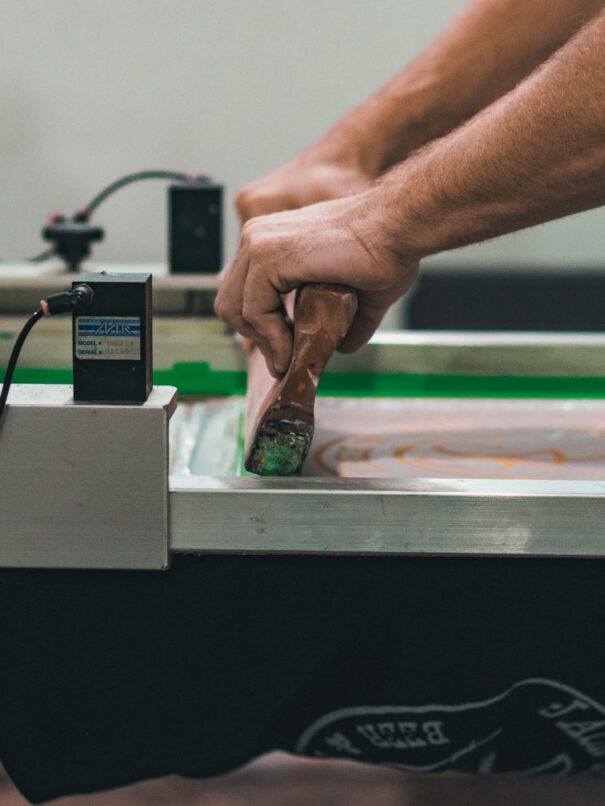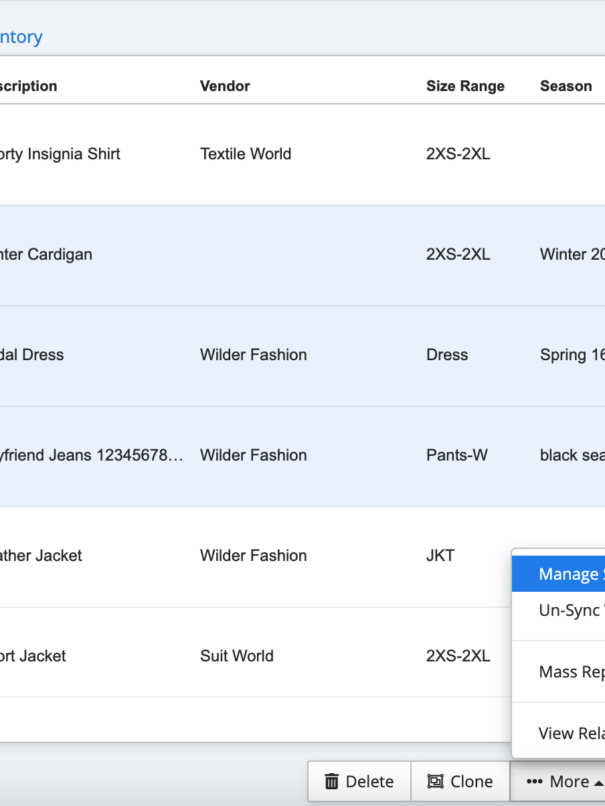In the world of fashion retail, inventory reporting is a source of valuable information and priceless insights. But despite this fact, many apparel businesses either fail to keep track of their inventory or do so manually, which often results in inaccurate inventory data. Even though it might not seem like a big deal, inaccurate reporting actually has the power to make or break your company’s ability to stand out from the crowd and make a profit.
In this post, we’ll take a look at what inventory reporting is, why it is important, as well as how inventory reporting software can help you create reports to improve your fashion business.

Image by Freepik
What is Inventory Reporting?
An inventory report is a written or electronic document that lists the stock that a company currently has on hand. It can contain figures indicating top-selling items, total inventory, and other product-related data to aid in tracking, categorizing, and managing inventory. Physical or digital inventory data can help to prevent stockouts and overstocking.
A solid inventory report gives a breakdown of the items in stock so the company can determine what they can sell and what they need to reorder.
Why is Inventory Reporting Important?
With proper inventory management reporting, fashion businesses can reap a number of benefits. Here are some of the most important ones:
Transparent inventory tracking. Inventory reports track your inventory, which is the largest and most important element of any product-based company. Thanks to this transparent inventory tracking, fashion retail stores can make sure they have enough products in stock and guarantee timely deliveries. In addition, consistent and transparent inventory tracking results in better inventory management and reveals patterns and trends in sales that can be used to improve inventory forecasting.
Organized categorization of the inventory. Organized categorization of inventory can help fashion companies by segmenting products based on their value, carrying costs, demand, and other factors. These categories enable brands to identify which SKUs are the most successful and which ones can be removed from their catalog.
Improved inventory planning. Inventory reports are essentially a measurement of how much capital you have invested in your various products and commodities because they are focused on your current inventory levels. Because of this, using inventory data from these reports is a great help when planning your inventory. Inventory reporting metrics provide detailed information that companies require to improve their demand forecasting, reorder points, budgeting, and other processes.
6 Types of Inventory Reports to Create
Inventory reports summarize the status and performance of your inventory, providing useful information about how many inventory items are available, whether any items have low stock levels, which items sell the quickest, which product categories perform best, and other relevant information. The following are the 6 types of reports you can create:
1. Inventory performance
Reports on inventory performance provide data about your best and worst-selling products, as well as year-over-year growth. This can help you understand the number of units you need to reorder.
Additionally, keeping an eye on year-over-year growth tells if your financial performance is getting better, getting worse, or staying the same, which can help you to adjust or improve your supply chain as needed.
2. Inventory value
A value report displays the total value of all of your products housed in separate warehouses and compares the volume of inventory at each storage location. In addition, it shows how well a product performs based on how much it costs, how long it has been sitting, and the inventory turnover rate for that product by the warehouse.
Inventory analytics are crucial for tracking your purchases so that you can effectively manage cash flow that is connected to inventory value.
3. Inventory profitability
SKU profitability, listing profitability, and trending profitability are the three components of inventory profitability tracking. Reports on SKU profitability show the actual profit each SKU produces. Listing profitability, on the other hand, examines your SKU’s performance information in terms of unit and gross margins, as well as inferred shares per sales channel. Last but not least, trending reports display your profitability over a specified time frame.
The information from inventory profitability reports can help fashion companies to reduce inventory costs, get rid of dead stock, and increase earnings by focusing on promoting high-selling products.
4. Low stock
This type of inventory report lets you know which products are getting low. If you constantly experience stockouts, customers will stop coming to your fashion store and start buying elsewhere. This makes it easier for you to monitor items with low stock levels, place prompt reorders, and ensure that there is always enough to meet customer demand.
5. Inventory forecasting
Inventory forecasting reports determine the amount of inventory required to fill upcoming orders based on how much merchandise you anticipate to sell over a predetermined period of time. To create the most precise forecasts possible, these projections take into account your historical sales data, planned promotions, and known external variables.
Thanks to data-driven forecasting, you will always have the exact amount of stock you require. This keeps your extra merchandise from lying around and costing you money.
6. Sales report
A comprehensive sales report will help you streamline your accounting procedures and increase your cash visibility. With the support of a sales report, fashion brands can explore a comprehensive accounting summary for each sales channel, including discounts and income as well as taxes and refunds.
In addition to breaking down sales into product categories and date ranges, a strong sales report can also help you identify trends and top customers, and enhance your forecasting efforts.
How to Write an Inventory Report
You can make a simple inventory report in Google Sheets or Excel to track and analyze your inventory data, but this does not support automated updates and simply shows the inventory situation at a given point in time.
For this reason, it is recommended that you use inventory management software that automatically updates you on stock levels, sales, etc. Instead of having to sift through inventory, a reliable inventory management reporting software can tell you which stock items are in short supply, or in high demand.
Using the steps below, you can create simple inventory management reports that need manual updating.
Create an inventory item column
The first column should contain a list of inventory items. This should be done at the SKU level and can be noted as the SKU name. For example, if you have a black blazer in five sizes, you would list each size for a total of five entries. The more SKUs you have, the more challenging this task will be.
Create a descriptions column
In the next column, write a description of each item. In addition to colors and sizes, try to add further context or information here to support what makes the product unique for the purposes of inventory monitoring and reporting.
Price each item
Enter the price of each item so that you can quickly determine the overall worth of your inventory and the value of each item based on inventory quantities and prices. You might need to keep track of the manufacturing and purchase costs separately from the selling price.
Create a remaining stock column
Next, include a column to track the number of items you have in stock. Every time a new sales order or purchase order is received, this column should be updated to ensure that each number is accurate.
Choose a time frame
How often you choose to update your report will depend on your individual business needs. In general, you will need to update it more frequently as your sales volumes increase since this means that your numbers will change quickly.

Image by aleksandarlittlewolf on Freepik
How Often Should a Business Produce an Inventory Report?
Again, the answer to this question depends on your specific business goals and needs. In any case, developing the habit of running inventory reports is important for all retailers, regardless of industry and size. Typical time periods for running inventory reports include:
- Weekly and monthly. You can easily pull weekly and monthly reports from your inventory management software and POS system. These reports allow you to regularly check the condition of your inventory, set inventory criteria to match demand, and even let marketing teams know how a certain promotion went.
- Before and after busy selling seasons. For fashion retailers, real-time sales figures provide a huge advantage. However, in order to increase sales, it is essential to understand your period-over-period growth. For instance, you can run inventory reports to compare Valentine’s Day 2022 to Valentine’s Day 2021.
- Depending on your business operations. Reports can also be based on the particular sector of business activity. For instance, fashion retail businesses require regular inventory updates to maintain adequate inventory levels at all times and guarantee customer satisfaction, especially if they have high volumes of hourly or daily orders.
The Bottom Line
Inventory reporting may seem like a tedious task, but it is an essential step in learning how your fashion business operates and identifying areas that may be improved.
In order to increase the effectiveness and accuracy of their inventory reporting, businesses in the fashion industry should consider investing in inventory management software. These systems automatically pull inventory data from POS systems to provide an overview of inventory location, performance, valuation, shrinkage, and more.
Inventory reporting software generates precise reports and offers valuable insights into your stock levels enabling you to easily determine what products you need to order, what promotions to run, and how to keep your customers happy and your fashion business profitable.









